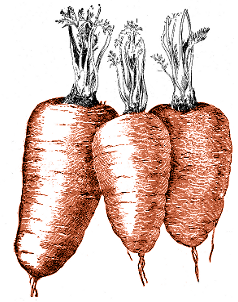Archive for the ‘Environmentalism’ category
Posted in Children, Garden Diary, Environmentalism, Experimentation, The Old Garden In Bristol on Wednesday, December 2nd 2020 (5.18 PM).
The previous post was about putting Halloween pumpkins in the garden to decompose. Now they’ve been there for a month, I thought it was about time to post a composite of their gradual decay into the soil.

It makes me a little sad to see this, especially given the goofy grin on The Child Who Likes Animals’ design. Still, I have to remind myself that it is inevitable, and they are just part of the circle of life and death in the garden. They have been broken down by mould, eaten by slugs and snails, and are now feeding the herbs and the honeysuckle.
Halloween, pumpkin, squash, decay, back bed, autumn
Posted in Children, Garden Diary, Environmentalism, Experimentation, The Old Garden In Bristol on Sunday, November 8th 2020 (10.14 AM).
The other day, over on the main blog, I briefly mentioned that the Hallowe’en pumpkins have been put into the darkest corner of the garden, the southern end of the back bed, for the local slugs and snails to eat. As not much grows successfully in that corner of the back bed save for sweet cicely and (once) tree spinach, it tends to be left as something of a wildlife corner; and The Child Who Likes Animals likes to leave things like melon rind there, to see how it attracts invertebrates and to watch it decay. So, a week ago when it was time to put the hollowed-out carved pumpkins in the food waste, we thought it might be a nice idea to leave them in the garden instead.

It was getting towards twilight yesterday when I took this photo; but you can see that there are a number of small slugs greatly enjoying them. Mould is spreading, too, and spiders are using them to lurk behind. If they behave like a melon rind does, the flesh will slowly disappear and possibly in a few weeks time only a papery skin will be left.
Halloween, pumpkin, squash, decay, back bed, autumn
Posted in Photobloggery, Environmentalism, The Old Garden In Bristol on Friday, September 11th 2020 (8.36 PM).
Some of the wildlife we have spotted in the garden this summer, not including the fox that passed through, then scaled the neighbours’ kitchen roof and was away up the street along the ridgeline of the terrace.
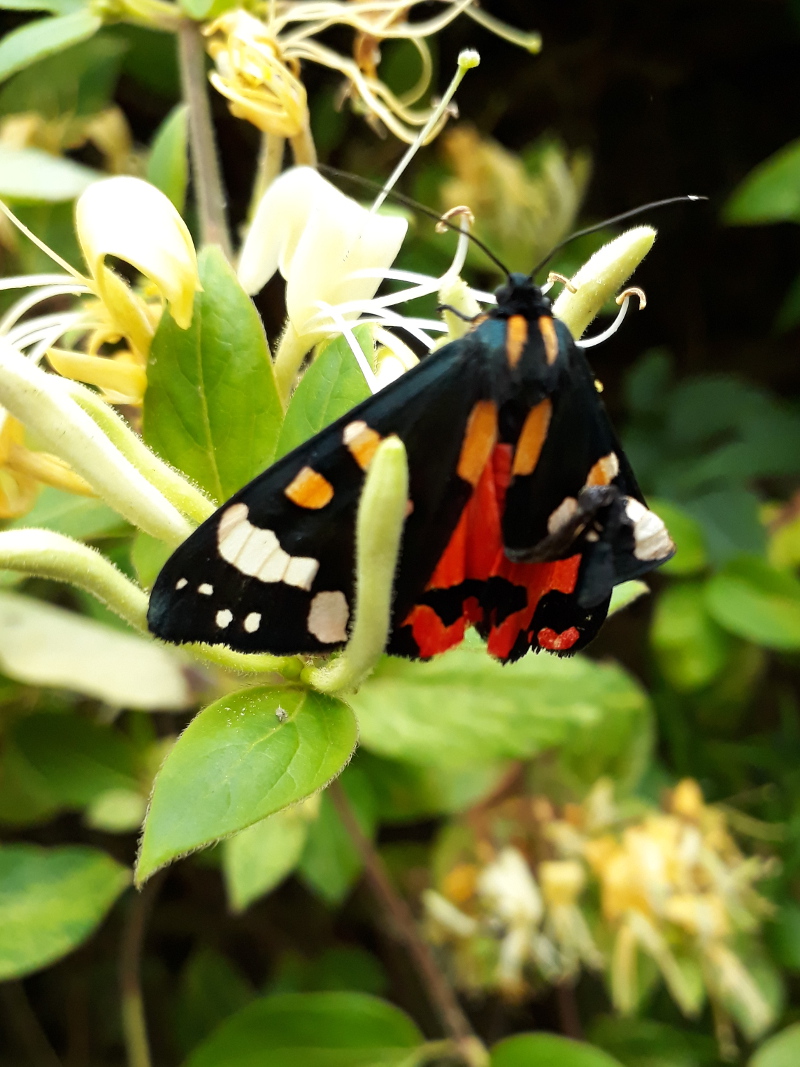
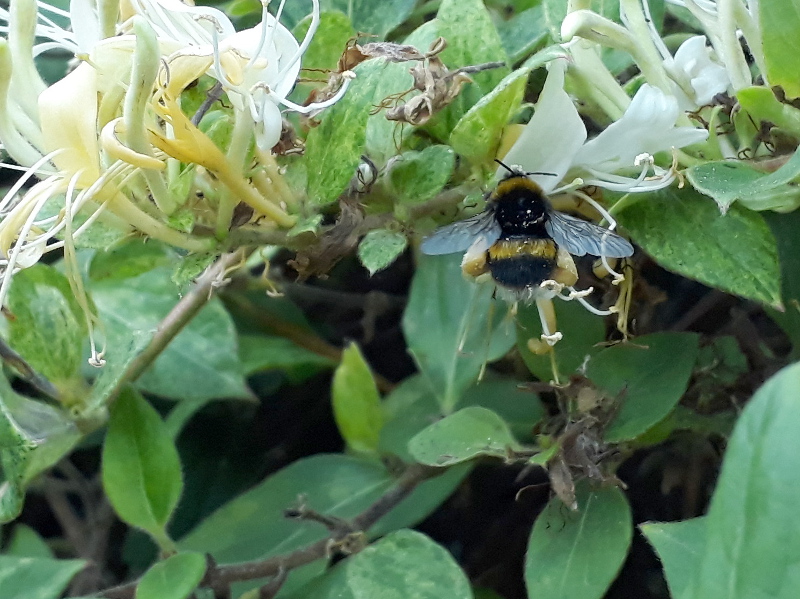
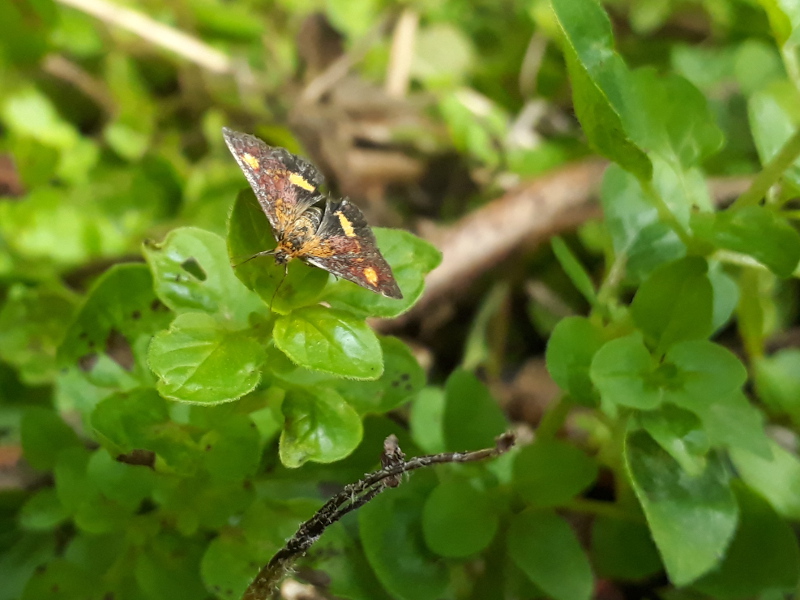
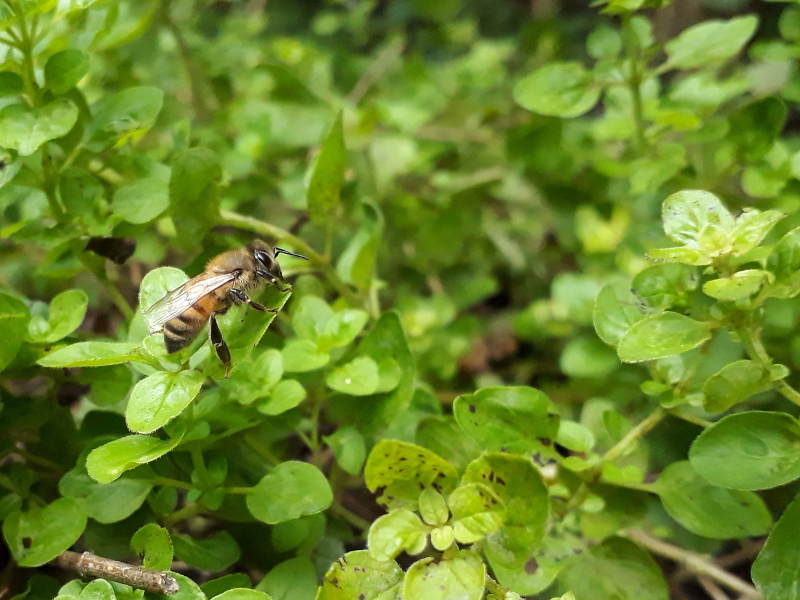
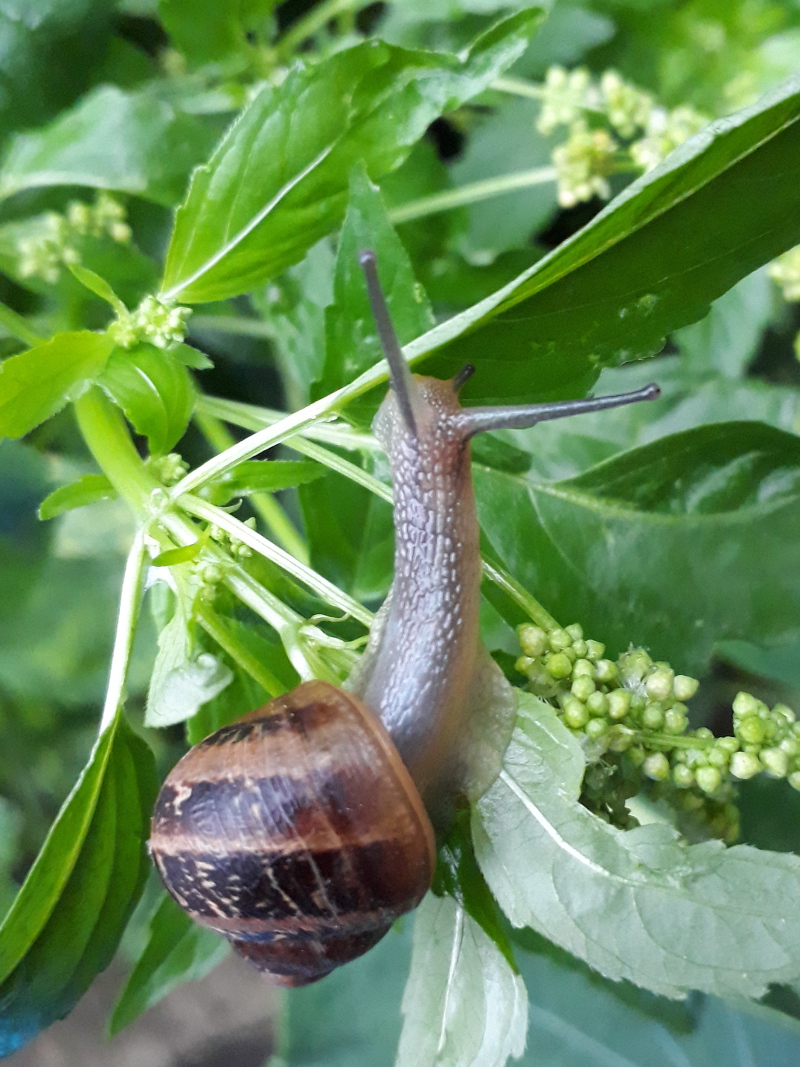
These are all phone pictures, because it’s much easier to whip my phone out when I spot something interesting flying around than to go hunting for a better camera. The biggest pain using the phone for photos like this is the difficulty in focusing on exactly the right thing.
wildlife, bee, bumblebee, honey bee, moth, mint moth, tiger moth, scarlet tiger moth, snail
Posted in Environmentalism, Garden Diary, The Old Garden In Bristol on Saturday, September 14th 2013 (10.32 PM).
There is one benefit, of course, to leaving the garden to go to seed for a year. It means that the wildlife can get along with things all on their own, without me coming along to pull up their homes and generally keep disturbing things. Whilst clearing the garden up in the past few weeks, we’ve seen lots of shieldbugs, crab spiders, caterpillars, various different insects and suchlike going about their own business and making the most of the place.
A couple of years ago, we bought a bee house, and nailed it up on the wall of the shed. It saw little use, to be honest, apart from by spiders and a couple of holes filled by a mason bee last year. This summer, though, leafcutter bees have found it, and made good use of it.
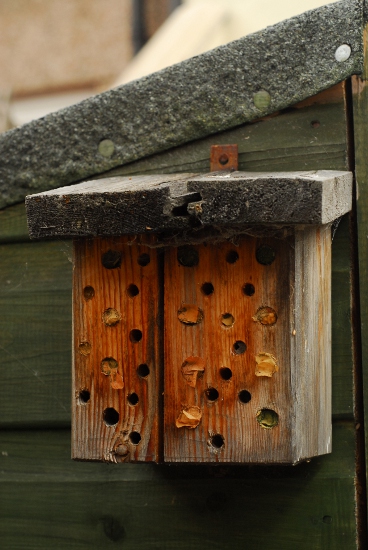
As you can see from the picture, leafcutter bees are quite picky about the sizes of the holes they will lay eggs in. You can also see one of the holes which a mason bee presumably crawled out of earlier in the year. Hopefully, at some point in the spring, a family of newly-mature leafcutter bees will emerge again.
In other news, we have sowed a few flowers ready for next summer: calendula, forget-me-not and borage. Slowly we’re drifting away from the original idea of making the garden as edible as we could, but that was never a strictly hard-and-fast rule to start with. They are, at least, all flowers which should please the leafcutters and bumblebees at various times next spring and summer. On the herb front, we’ve acquired a few stems of bay, and planted them in one of the wastebins used in previous seasons for growing potatoes. Growing potatoes is difficult to justify in a garden the size of ours; hopefully the bay will make a bush to last for a few years to come.
bay, bee, bee house, borage, calendula, forget-me-not, leafcutter

